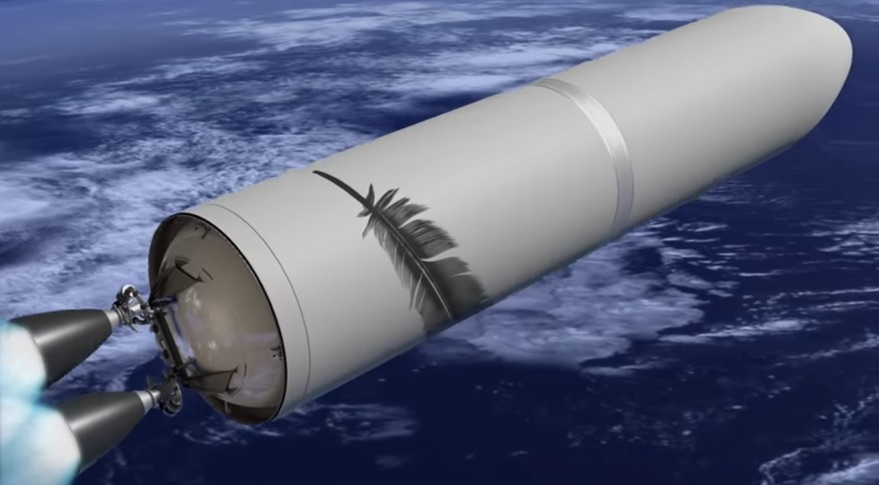Blue Origin Studying Repurposing of New Glenn Upper Stages

SILVER SPRING, Md. — Blue Origin has studied repurposing upper stages of its future New Glenn launch vehicle to serve as habitats or for other applications as part of a series of NASA-funded commercialization studies.
Brett Alexander, vice president of government sales and strategy at Blue Origin, said the company looked at ways it could make use of the second stage of New Glenn rather than simply deorbiting the stage at the end of each launch, but emphasized the company currently had no firm plans to reuse those stages at this time.
That study was part of a series of study contracts awarded by NASA last August to study future concepts to support commercial human spaceflight in low Earth orbit. "We focused there on the reuse of the second stage of New Glenn and what we might be able to do with that volume and capacity once we're on orbit," he said during a panel discussion about low Earth orbit commercialization at the American Astronautical Society's Goddard Memorial Symposium here March 20.
Related: Blue Origin's Massive New Glenn Rocket in Pictures
That included, he said, turning those stages into habitation modules or other facilities for commercial use in Earth orbit. Those stages could be launched already outfitted for those uses or refitted once in orbit.
"We don't have actual plans at this moment" to reuse the upper stages in those ways, he noted. "We'll see what the best approach is at the end of the day."
Development of New Glenn remains on schedule to support a first launch in 2021. The total cost of the New Glenn program is "north of $2.5 billion," he said, including $1 billion for facilities in Florida where the rocket will be assembled and launched.
Get the Space.com Newsletter
Breaking space news, the latest updates on rocket launches, skywatching events and more!
Blue Origin was one of 13 companies, ranging from aerospace firms to consultancies, that received NASA contracts for LEO commercialization studies. The contracts had a total value of $11 million, with no individual award larger than $1 million.
Another company that received a contract was NanoRacks. It, too, examined the feasibility of repurposing upper stages for use on future commercial space stations. The company assembled a team of 13 subcontractors for the study to examine issues ranging from insurance to the ability to return payloads to Earth, said Chris Cummins, chief commerce officer at NanoRacks, on the same panel.
"There's a grand opportunity there," saying that reused upper stages could be used for manufacturing applications in addition to habitation. "It's going to take simple steps to get there."
Other points on Cummins' slide about the study emphasized the importance of public-private partnerships, development of an "ecosystem" of capabilities in low Earth orbit and the ability for companies that invest in hardware for the International Space Station to have guaranteed access to it.
- Read SpaceNews for the Latest Space Industry News
- Jeff Bezos Lays Out Blue Origin's Rocket Reusability Vision for Space Travel (Video)
- Blue Origin's 1st New Shepard Rocket to Carry People Is in 'the Barn'
This story was provided by SpaceNews, dedicated to covering all aspects of the space industry.
Join our Space Forums to keep talking space on the latest missions, night sky and more! And if you have a news tip, correction or comment, let us know at: community@space.com.

Jeff Foust is a Senior Staff Writer at SpaceNews, a space industry news magazine and website, where he writes about space policy, commercial spaceflight and other aerospace industry topics. Jeff has a Ph.D. in planetary sciences from the Massachusetts Institute of Technology and earned a bachelor's degree in geophysics and planetary science from the California Institute of Technology. You can see Jeff's latest projects by following him on Twitter.










